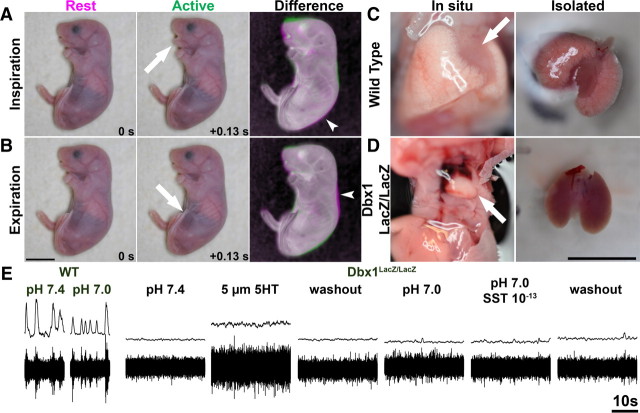Figure 7.
Dbx1 gene function is necessary for breathing in vivo and in vitro. Perinatal mice show two distinct respiratory patterns. Cropped video frames showing the same E18.5 wild-type mouse at rest (left), during an active respiratory movement (middle; A, inspiration from supplemental Video 1; B, expiration from supplemental Video 2; both videos available at www.jneurosci.org as supplemental material), and a pseudocolor negative image difference overlay (right). Frames are separated by 0.13 s. Arrows (A, B) indicate the region of largest movement. Magenta regions (arrowheads) indicate compression during movement. Green regions indicate expansion during movement. C, Wild-type mice with a respiratory pattern have inflated lungs both in situ and when isolated. D, Dbx1LacZ/LacZ mice have collapsed but normal lungs in situ and when isolated. Scale bar, 1 cm. E, Integrated (upper) and raw fictive inspiratory output of C1 from E18.5 WT (left) and Dbx1LacZ/LacZ mice. Wild-type mice show rhythmic respiratory activity and increased response to acidosis (left two traces). Dbx1LacZ/LacZ show no respiratory activity in response to 5 μm 5-HT, acidosis, or acidosis and SST (10−13 m). Note increases in baseline motor activity after 5-HT. Calibration: 10 s.

